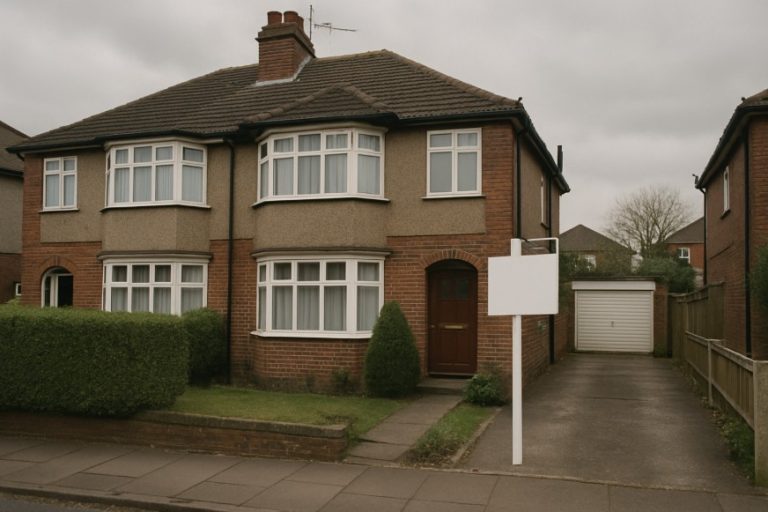Understanding the landscape of housing costs in the UK is more crucial than ever, especially for families and individuals seeking secure, long-term accommodation. Council housing offers a viable alternative to the increasingly expensive private rental market, yet many still have questions about what it truly costs.
This guide aims to break down the financial aspects of renting a 3 bedroom council house in the UK, offering clarity on regional variations, eligibility factors, and the additional responsibilities tenants should be aware of.
What is a Council House and Who is Eligible to Rent One?

Council houses, also known as social housing, are managed and provided by local councils or housing associations. They are designed to offer a stable, long-term housing option for individuals and families who face difficulty accessing accommodation through the private rental market.
Eligibility is determined using a points-based or banding system, which assesses an applicant’s housing need. Those in higher need are prioritised on waiting lists.
Typical eligibility criteria include:
- Being legally resident in the UK
- Having a low or moderate income
- Experiencing homelessness or living in overcrowded or unsuitable housing
- Having a local connection to the area
- Having medical or social needs requiring specific housing types
Applicants must apply through their local authority and provide supporting documentation. Once approved, they are either placed on a waiting list or allowed to bid on available properties through a choice-based letting system.
How Are Council House Rents Calculated in the UK?
Council house rent in the UK is calculated using a formula known as “social rent.” This formula takes into account several variables and is regulated to ensure affordability. Local authorities are required to comply with national policy guidelines when setting rent levels.
Key factors that influence council rent pricing include:
- Property size: Larger homes typically have higher rents
- Local earnings: Areas with higher average incomes may have slightly higher council rents
- Market value of the property: Valuations help determine rental baselines
- Location – Urban centres may have higher operational and maintenance costs, affecting rent
- Service charges: Additional fees may be added for communal services or maintenance
Council rents tend to be significantly lower than private sector rents. They are often adjusted annually, usually in line with inflation or government guidelines. Local authorities may also factor in property condition or upgrades when reviewing rent charges.
What is the Average Cost of a 3 Bedroom Council House in the UK?
Council rent prices vary by location and housing type. However, national averages provide a useful benchmark for potential tenants.
Based on recent estimates and available data, the average monthly rent for a 3 bedroom council house in the UK is approximately £413. This results in an annual rent of around £4,956. When including council tax, which averages £1,623 for a Band C or D property, the total annual housing cost rises to over £6,500.
Average Rent & Council Tax Breakdown (3 Bedroom)
| Property Type | Monthly Rent | Annual Rent | Annual Council Tax |
| 3 Bedroom Terraced House | £413 | £4,956 | £1,623 |
| 3 Bedroom Terraced Amenity Cottage | £406 | £4,872 | £1,623 |
| 3 Bedroom Semi-Detached Wheelchair Cottage | £428 | £5,136 | £1,623 |
These figures highlight the affordability of council housing when compared to private sector rentals. While costs can fluctuate slightly depending on region and council policy, the differences are generally minimal across similar property types.
What are the Cost Differences Between Council and Private Rentals?

The most significant advantage of council housing is its affordability. Private landlords in the UK typically charge market-rate rents, which can be influenced by demand, property features, and the economic climate.
For example, a 3 bedroom house rented privately may cost between £850 and £1,300 per month, depending on the region. By comparison, the same size property within the council sector would average around £413 per month.
Comparative Table: Council vs Private Rental (3 Bedroom)
| Rental Type | Monthly Average | Annual Total |
| Council Housing | £413 | £4,956 |
| Private Rental (UK Avg) | £1,075 | £12,900 |
Key points of difference:
- Deposit requirements: Private landlords often require deposits equivalent to 5 weeks’ rent, whereas councils may only require a week’s rent in advance.
- Rental increases: Private rents can increase based on market conditions; council rents typically increase at a regulated rate.
- Tenant rights: Council tenants often enjoy greater security of tenure compared to assured shorthold tenants in the private sector.
For families on a tight budget or relying on benefits, council housing provides a stable and predictable housing solution.
How Does Council Tax Affect the Total Cost of Renting a Council House?
Council Tax is a compulsory charge levied by local authorities on residential properties. It contributes towards essential services like street lighting, waste collection, education, and emergency services.
The amount of Council Tax payable depends on several factors:
- Property valuation band: Most 3 bedroom council houses fall within Bands C or D
- Local authority rates: Each council sets its own tax rates annually
- Household income and occupancy: Single occupants or low-income tenants may qualify for reductions
In most council-run housing, Council Tax is not included in the monthly rent and must be paid separately by the tenant.
On average, the annual Council Tax for a 3 bedroom council house is £1,623. However, discounts may apply in the following scenarios:
- Single adult occupancy (25% discount)
- Full-time student exemptions
- Council Tax Reduction for those on benefits
Tenants are advised to check with their local authority for specific rates and eligibility for support.
How Does Location Impact Council Rent Prices Across the UK?

While council rents are generally regulated and more affordable than private rents, they can still vary by location due to local policy decisions and operating costs.
Location-based differences include:
- London and South East: Tend to have the highest council rents due to higher property values and service charges
- Northern regions and parts of Wales and Scotland: Typically offer lower council rents
- Urban vs rural: Urban councils may add service charges for maintenance of lifts, communal areas, or waste disposal not applicable in rural areas
For example:
- A 3 bedroom council house in Birmingham may cost between £400–£450/month
- In Newcastle, tenants might pay around £375–£420/month
- In Central London, rent for similar council homes may reach up to £600/month
These regional variances are also influenced by the local availability of housing stock and the demographic demand for social housing.
What Government Schemes Support Council House Tenants Financially?
To assist tenants who may struggle to pay their rent or associated costs, several government support schemes are available:
- Housing Benefit: Provides financial assistance to cover part or all of the rent for low-income households. It’s being phased out and replaced by Universal Credit in many areas.
- Universal Credit (Housing Element): Covers housing costs, including rent, and is paid directly to tenants or their landlord.
- Discretionary Housing Payments (DHP): Offers short-term help when tenants experience a shortfall in Housing Benefit or Universal Credit.
- Council Tax Reduction: Available to those on low incomes to reduce the amount of Council Tax they need to pay.
- Local Welfare Assistance: Administered by councils for emergency or essential household support.
To qualify for these schemes, tenants usually need to:
- Be on a low income or receiving specific benefits
- Provide evidence of rent, income, and household circumstances
- Reapply annually or when their situation changes
Tenants should also be aware that housing benefit only covers the “eligible rent,” which may exclude certain service charges.
What Should Tenants Know Before Applying for a 3 Bedroom Council House?
Applying for a council property, particularly a 3 bedroom house, requires understanding the allocation process and preparing the necessary documentation.
The standard application process includes:
- Registering with your local council’s housing department
- Providing documents such as proof of ID, income, and any health or social care needs
- Completing an assessment to determine your level of housing need
- Bidding on suitable properties through a choice-based letting system (where applicable)
Because 3 bedroom properties are in high demand, especially in cities, waiting times can range from several months to multiple years depending on the applicant’s priority level.
Applicants must also:
- Keep their contact details and household information up to date
- Be realistic about the type and location of housing offered
- Respond promptly to any offers or invitations to view properties
Some local authorities offer online portals where applicants can track the status of their applications or view available properties.
What Are the Long-Term Benefits of Living in a Council House?

For many households in the UK, council housing is more than just an affordable place to live—it’s a pathway to stability and long-term security. While waiting times and eligibility criteria can be barriers, the benefits for successful applicants are substantial.
Key advantages include:
- Security of tenure: Most council tenancies are long-term and offer strong legal protections
- Predictable rent increases: Limited to inflation-based adjustments, unlike fluctuating market rents
- Community living: Many council estates foster a sense of community through schools, green spaces, and local amenities
- Support services: Councils often provide access to maintenance, tenant support, and financial assistance
- Right to Buy: In England, long-term tenants may have the option to purchase their home at a discounted rate
These features make council housing an attractive option for families, key workers, and individuals seeking housing that is both affordable and stable over the long term.
Conclusion
While the cost of renting a 3 bedroom council house in the UK is shaped by various factors including location, eligibility, and council policies, it remains one of the more accessible housing options for those in need.
Understanding the breakdown of rent, Council Tax, and support schemes available can help prospective tenants make more informed choices. By exploring this housing route, many UK residents may find greater financial stability and long-term benefits not often found in the private rental sector.
Frequently Asked Questions
How do I apply for a council house in my local area?
Applicants should register on their local council’s housing register, provide all required documentation, and participate in the bidding process if applicable.
Can single parents apply for a 3 bedroom council house?
Yes, especially if they have two or more children of different ages or genders. Housing size needs are determined by household makeup.
Is rent for council housing fixed or can it increase?
Rent can increase annually but is usually capped or adjusted based on inflation and local authority decisions.
Do tenants need to pay a deposit for a council house?
Most councils do not require a deposit, although some may request a week’s rent in advance.
Can I swap my council house for another?
Yes, through mutual exchange schemes, tenants can swap homes with other council or housing association tenants.
What happens if I fall behind on my council rent?
Tenants should contact the council immediately. Repayment plans or hardship assistance may be available to avoid eviction.
Are pets allowed in council houses?
This depends on the housing association or council policy and the type of property. Flats often have stricter rules than houses.






